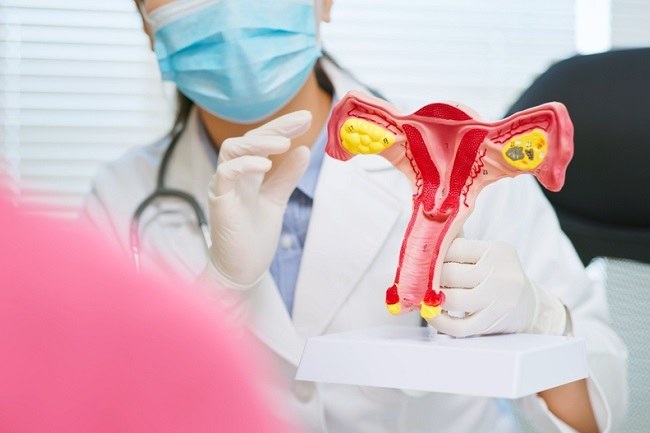Ovarian cysts are often associated with ovarian cancer. In fact, not all ovarian cysts have the potential to become malignant or cancerous. With proper treatment, ovarian cysts can be treated and prevented from getting worse.
Ovarian cysts are quite common in women. These cysts are usually harmless and can go away on their own without special treatment. What makes ovarian cysts dangerous is when they burst, are very large, or block the blood supply to the ovaries.

In addition, ovarian cysts that are not detected and treated early on also have the potential to develop into malignancy or cancer.
Risk Factors for Ovarian Cysts
There are several factors that can increase a woman's risk of developing ovarian cysts, including:
- Hormonal disorders
- Side effects of drugs, such as birth control pills or hormone replacement therapy
- Certain diseases, such as endometriosis and pelvic infection or inflammation
- Previous history of ovarian cysts
- History of surgery on the ovaries
In certain cases, benign ovarian cysts can potentially lead to ovarian cancer. This is more at risk for women who have certain risk factors, such as:
- Are over 50 years of age or have menopause
- Has the BRCA1 and BRCA2 mutation genes
- Have a family history of ovarian cancer, breast cancer, or colon cancer
- Being overweight or obese
- Taking hormone therapy after menopause
- Having a smoking habit
- Have breast cancer
- Taking drugs to increase fertility, such as hormone therapy
Recognize the various symptoms of ovarian cysts
Ovarian cysts are usually difficult to detect or diagnose because they are generally asymptomatic. These cysts only cause symptoms when they are large, rupture, or interfere with ovarian function.
However, some ovarian cysts can cause several symptoms, such as:
- Frequent urination
- Pain during defecation and sexual intercourse
- Dizziness
- Stomach ache
- Nausea and vomiting
- Flatulence
- Changes in the menstrual cycle
- Breast pain
- Easily full even when you eat very little
- Pelvic pain before or during menstruation and spreads to the lower back and thighs
If you experience the symptoms above, especially if you have risk factors for ovarian cysts, you should immediately see a doctor.
How to Detect Ovarian Cysts
Ovarian cysts can be detected by examination by a doctor. To detect and diagnose ovarian cysts, the doctor can perform a physical examination and supporting examinations in the form of:
Ultrasound (USG)
Ultrasound examination is one of the main steps in diagnosing ovarian cysts. With ultrasound, the doctor can see the size, shape, location, and see if the cyst contains solid or fluid tissue.
This examination is also performed to monitor the development of ovarian cysts and guide doctors when they want to do a biopsy on the ovaries.
Biopsi
A biopsy is a procedure for taking a sample of ovarian tissue to be examined in the laboratory to determine whether the cyst is benign or has the potential to become malignant.
Blood test
The doctor will also do a blood test, if the ultrasound or biopsy results show that the cyst has the potential to become malignant or has the characteristics of ovarian cancer.
One method of testing that can be done through this test is the CA-125 protein test. This substance is usually increased or detected in women who have certain diseases, such as ovarian cancer, pelvic inflammatory disease, endometriosis, or uterine fibroids.
Laparoscopy
Through a small incision, the doctor will insert a laparoscope, which is a tube with a light and camera on the end. With laparoscopy, doctors can look directly at the pelvic cavity and reproductive organs to detect any abnormalities.
Generally, ovarian cysts will be treated medically if they are large, cause pain, cause frequent urination, or irritate menstruation.
However, not all ovarian cysts require medical treatment. Types of functional cysts associated with the menstrual cycle are generally harmless. These cysts can disappear on their own within 2–3 menstrual cycles.
If you have any symptoms or have the risk factors for ovarian cysts mentioned above, immediately consult a doctor.
Through early examination and treatment, your doctor can determine what type of cyst you have and treat it so that it does not develop into ovarian cancer. Thus, ovarian cysts can be treated properly and the risk of complications is lower.
Label : Health
Comments
Post a Comment